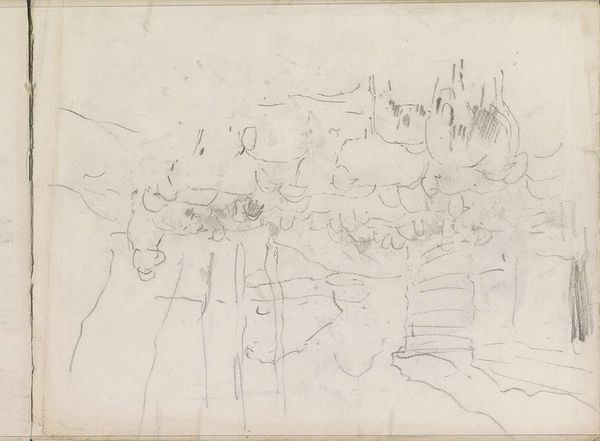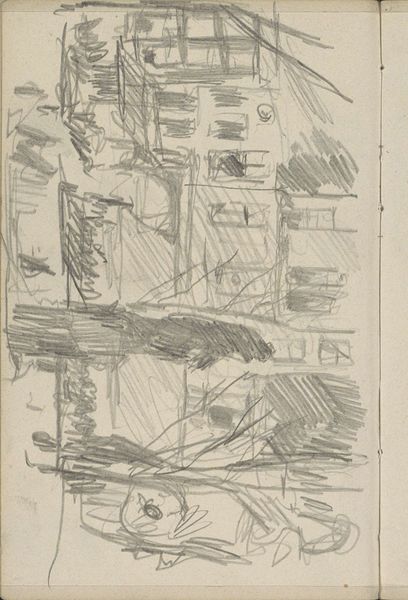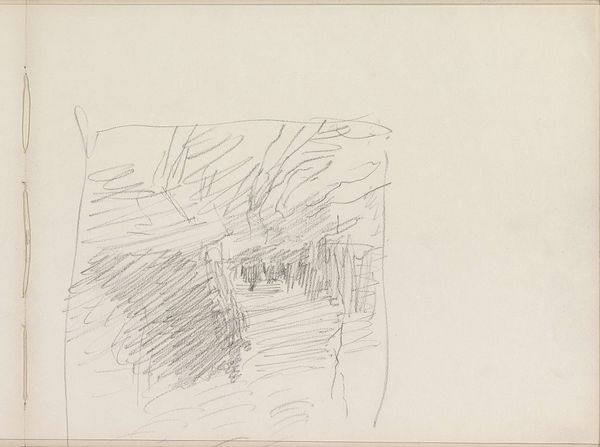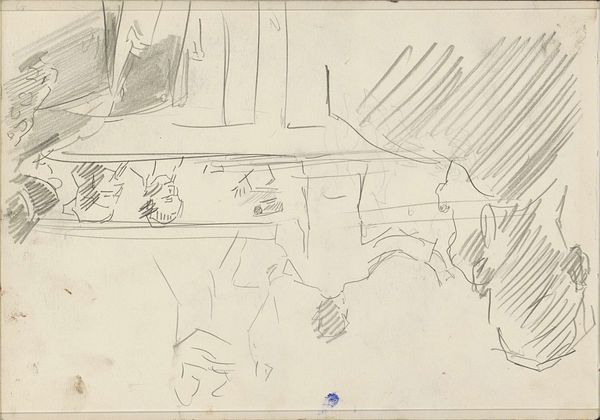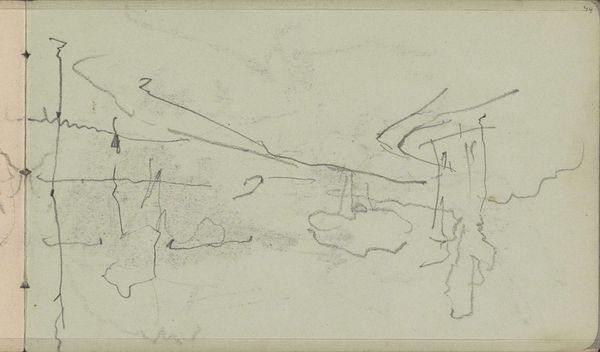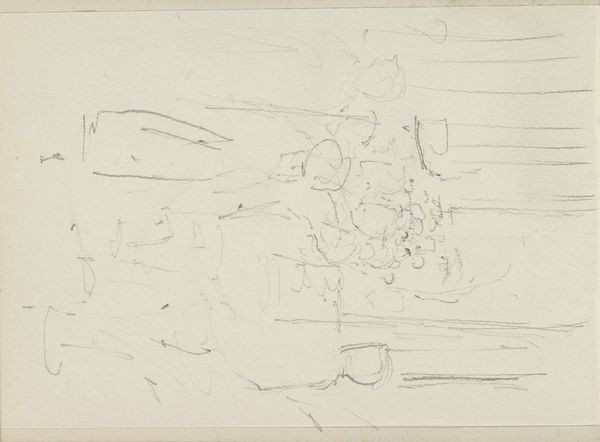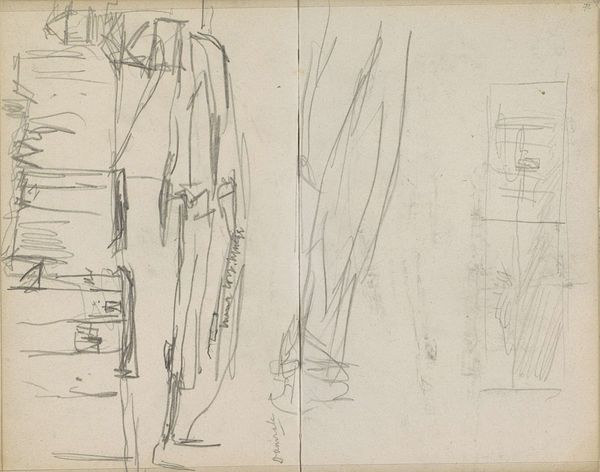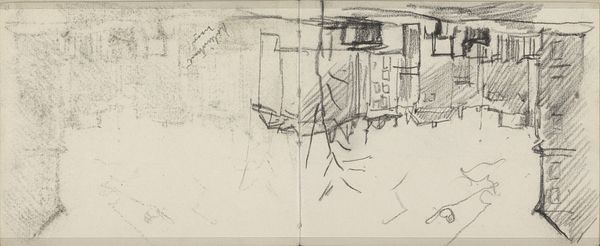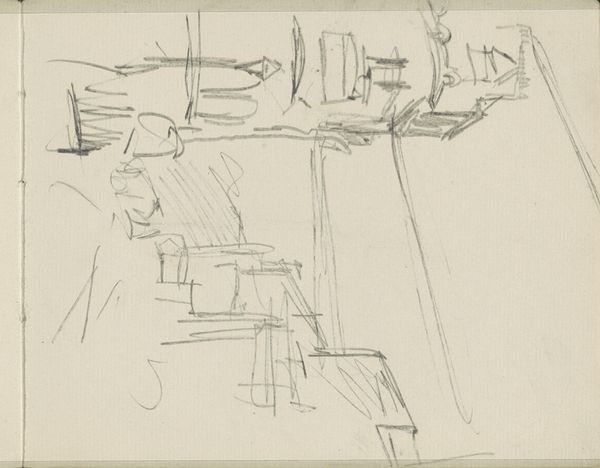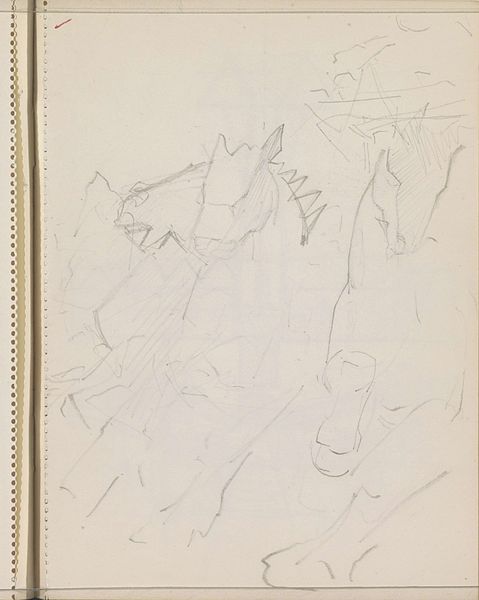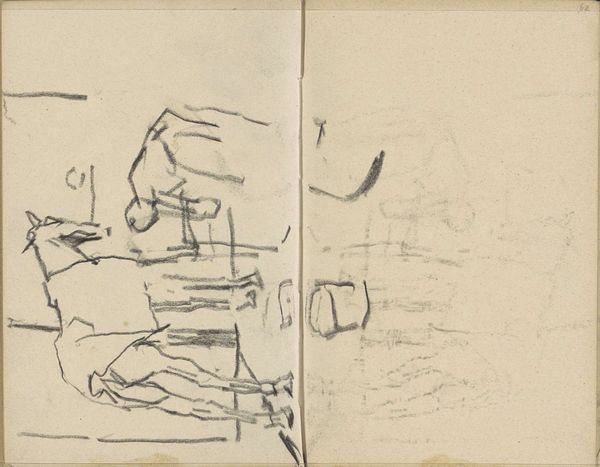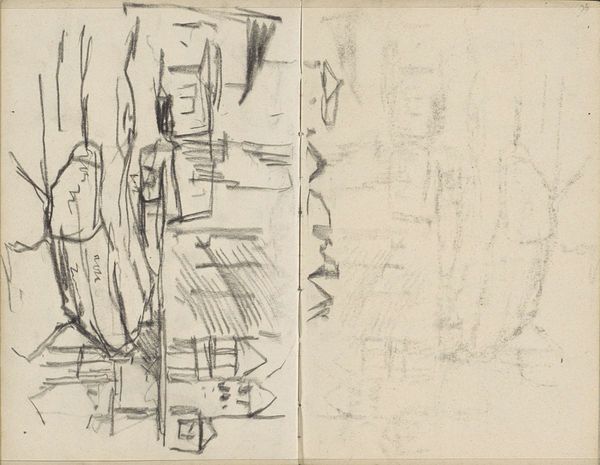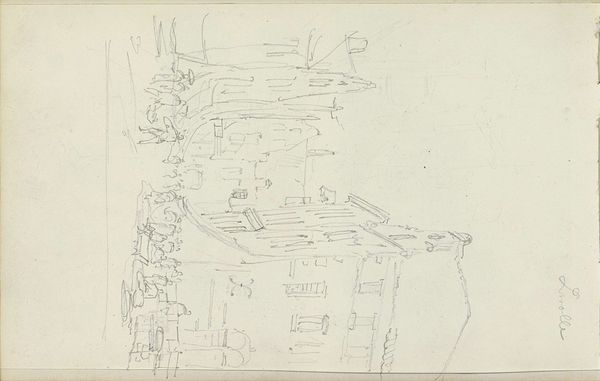
drawing, pencil
#
drawing
#
pencil sketch
#
figuration
#
pencil
#
history-painting
#
academic-art
#
realism
Dimensions: height 145 mm, width 184 mm
Copyright: Rijks Museum: Open Domain
Curator: There's something hauntingly beautiful about this preparatory drawing, "Compositieschets voor een figurenrijk stuk", created by Pierre Puvis de Chavannes. Dating between 1834 and 1898, it’s a pencil sketch residing here at the Rijksmuseum. The ethereal quality, almost ghostly… Editor: It definitely evokes a sense of history, though perhaps in a more conceptual rather than literal way. It feels incomplete, a fragment of some larger narrative or event, almost a dreamlike historical painting in its conception. Curator: The composition definitely points to a planned history-painting, with its multitude of figures, and that suggests the cultural values Puvis de Chavannes was imbibing and projecting, right? He's deliberately engaging with historical consciousness. Look how the figures blend—do you see any symbolism emerge in these interactions? Editor: I think the indistinctness of the figures themselves pushes against a very defined symbolic reading, in favor of more of an emotional or atmospheric understanding of history. This ambiguity likely made it more palatable to a contemporary audience perhaps weary of the grand narratives often associated with traditional history painting. Curator: I see that. It lacks some of the clarity expected in Academic art, though there’s a definite realism struggling to surface from the blur. Maybe the incomplete quality we see suggests his doubts about this very form? That would speak to broader cultural shifts in the understanding and use of historical narratives. Editor: It certainly raises questions about what ‘history’ means – is it a clear record, or a fragmented memory? Perhaps his drawing pushes against established artistic conventions, inviting a renewed way to publicly engaging and reflecting on these ideas at that time. This would be the kind of approach we begin to see from later modernists. Curator: It offers an openness, a visual space for reflection that invites viewers to participate in constructing the narrative rather than passively accepting a singular interpretation. And as a preliminary sketch, this might even highlight the artist’s struggle, allowing that ambiguity to be palpable. Editor: Exactly. So, considering this within our current museum context, presenting something seemingly unfinished could spark different conversations around historical events, the act of remembering, and even the role of the museum itself. Curator: I agree, considering our visitors, offering a view into an artist’s process encourages thinking beyond fixed views, and towards art's continual cultural influence on the past.
Comments
No comments
Be the first to comment and join the conversation on the ultimate creative platform.
